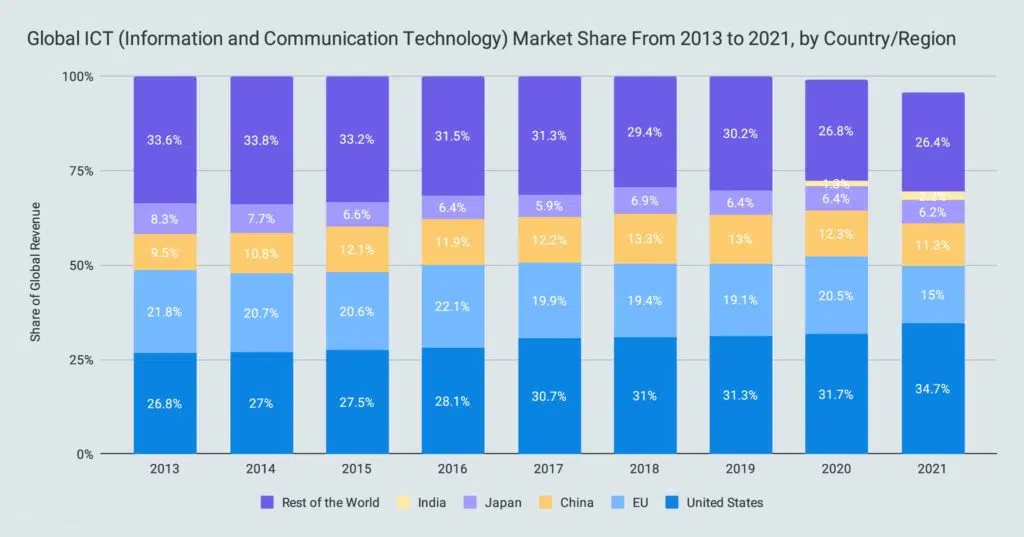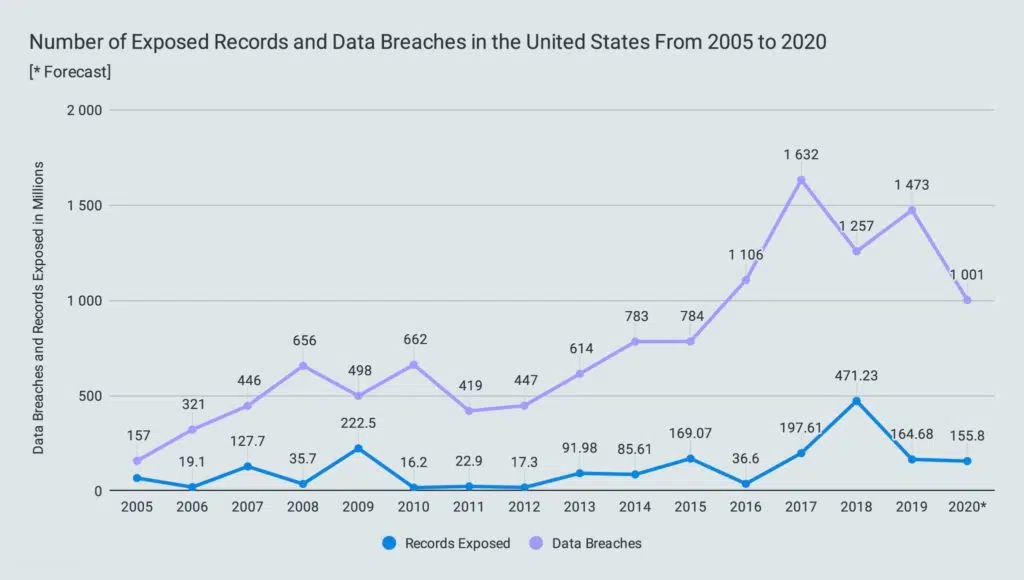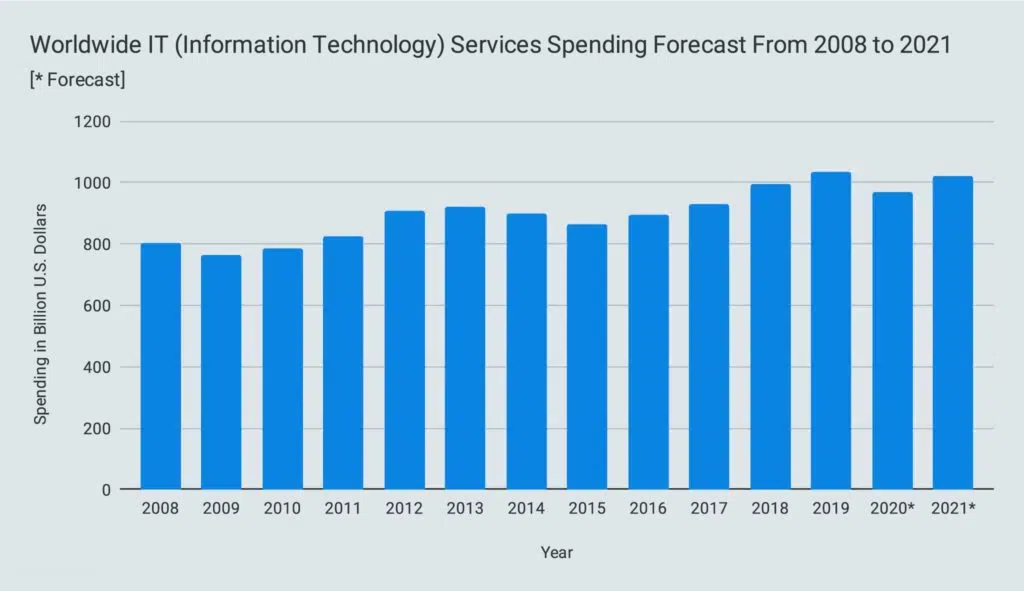Are you curious about IT vs ICT and the difference between the terms “Information Technology” and “Information and Communication Technology”? You’re not alone.
These two fields are often used interchangeably, but they serve different purposes, especially in the business world.
In this comprehensive guide, we’ll demystify the differences between IT and ICT, explore their applications, and help you understand which is more relevant for your needs.
Whether you’re a student, a business owner, or just tech-curious, this article is your go-to resource.
Ready to become an IT and ICT pro? Let’s dive in!
What’s the Difference Between IT and ICT?

Most people know about information technology (IT), whether in the workplace, at home, or watching the I.T. Crowd.
No matter where you heard about it, you know that it has to do with technology and the people who fix it.
What most people don’t know, however, is that information and communication technology (ICT) is considered by many to be separate from IT.
There is no universal definition for ICT, but it is generally agreed that it has more to do with communications between people than IT does.
In this article, you will find out the similarities between information technology and information and communication technology, as well as the differences.
What Is the Definition of IT?
Information technology, commonly known as IT, is the use of technology to solve problems.
Although IT is typically reserved for business, home and entertainment technologies can also fall under this umbrella.
You might think only of IT as the nerdy guy in glasses who comes around to restart the internet router now and then.
However, the scope and scale of IT are way bigger.
You would be hard-pressed to find a company that doesn’t heavily rely on IT for all aspects of their business.
Essentially, IT embraces everything to do with computers.
When you use your computer to save pictures, send emails, and program software, trust that information technology is what made it possible.
What Is an IT System?
You may have heard your company talk about updates to its IT system, or (more often than we might like) how the IT system has gone down.
But what exactly is an IT system?
Every piece of hardware and software used within a network of individuals constitutes an IT system.
The computer system/network your company uses is another term for an IT system.
This includes anything used to help you store, retrieve, manipulate, and communicate data.
For example, internet routers have a tendency to crap out on us when we least expect it.
This is a failure of the whole IT system because the internet supports nowadays how almost every computer operates.
Without the internet, the entire computer system fails.
If you’d like to learn more about the history of IT explore our deep-dive article here.
What Is the Definition of ICT?
While IT deals with computer systems, vs ICT which is more inclusive of technology that allows you to communicate with others and is a direct extension of IT.
And the two are not mutually exclusive.
Telecommunications is a term you might see thrown around a lot when talking about ICT.
Otherwise known as telecom, telecommunications is the transmission of signals across long distances.
The internet and cellular phone networks are commonly known examples of telecom.
The chart below shows the market share of different countries and regions in the global ICT market:

ICT doesn’t just include modern technology like telecom.
Old-school telephones, fax machines, televisions, and any other device used to communicate text, audio, or video to another person are considered ICT.
Learn more about the real world application of ICT in business in our other article here.
What Is Electronic Data Processing?

Electronic Data Processing (EDP for short) is any method that automatically organizes, collects, and stores commercial information within a computer network.
EDP falls under IT and ICT and is one of the main features of both.
EDP distinguishes between organizing work done by computers and human clerical methods.
Remote data entry done by human workers is not considered EDP.
However, the automated process that transmits and organizes that data might be.
An airline’s online reservation system is an example of EDP.
When you book your ticket, an automated system registers your payment and reserves your spot on the plane.
Without electronic data processing, this wouldn’t be possible.
Many different products are available for your electronic data processing needs.
Programs like Microsoft Office and IBM Lotus are some of the more well-known general EDP applications.
Also: Digital Information Technology: Meaning?
What Are Examples of IT vs ICT Technologies?
To give you some clarification, here are some common examples of IT and ITC, some of which may fall under both categories:
- Software applications
- Computer operating systems
- 5G internet
- Telephones
- Smartphones
- Radios
There are more than enough examples to take up this whole page, but let’s not subject you to that. Instead, just know that IT or ICT touch nearly every aspect of your daily life.
Understanding the differences between information technology and information and communications technology may be tough. Indeed, history is there to show that you aren’t the only one who’s confused.
What Is the History of IT vs ICT?
IT and ICT have existed in some form or another for thousands of years.
The earliest known tool used to process information is a tally stick, an ancient tool used to record numbers and messages.
Whether that is a form of IT or ICT is up for debate.
You might be surprised to find out that the first analog computer, the Antikythera mechanism, was invented around the first century B.C.
The ancient Greeks used this to make astronomical and astrological predictions for a variety of purposes.
Through the Dark Ages, innovations began to drop off.
It wasn’t until the 17th century that similar geared mechanisms started appearing again.
In 1645, the first mechanical calculator was invented to compute basic algorithmic formulas.
The lines blurred between IT vs ICT, even back then.
You could use these ancient technologies to communicate with others, but most likely, that wasn’t their primary purpose.
What Is the Origin of Modern IT vs ICT?
WWII was critical to the development of modern IT and ICT in the 1940s:
Code-making and breaking technologies became essential for Allied and Axis powers to continue their fight across great distances.
The Germans had the Zuse Z3, considered by most to be the first programmable computer and a massive milestone for IT development.
Countering the Zuse, the Allies developed the Colossus, the first recorded electronic digital computer ever invented.
The invention of transistors in the late 1940s by Bell Laboratories was a quantum leap forward for what would eventually be known as IT.
Transistors made computers energy-efficient.
This meant you wouldn’t need the power for an entire city block just to run a few calculations.
As the 20th century wore on, more innovations like the microprocessor and integrated circuit became increasingly common.
This leap was primarily a result of the Cold War, with the U.S. and Soviet Union constantly competing for technological supremacy.
Are IT and ICT the Same?
You might be wondering why there is even a distinction between IT and ICT.
The answer might surprise you.
The fact is that depending on who you ask; there might not even be a distinction.
This is because so much of IT and ICT are interrelated.
Technologies developed for IT have practical applications in ICT and vice versa.
Modern communication technologies are also almost entirely digital anyway.
You might then ask, why even use the terms IT vs. ICT now at all?
For now, there are still technologies that aren’t intended for communication.
That’s why it’s important, especially at an academic or governance level, to distinguish between IT and ICT.
IT workers generally don’t deal with the existing communications infrastructure that technology might use at a professional level.
Conversely, ICT professionals might not have the experience to fix a computer used in an office.
What is Technological Convergence?

A term like “technological convergence” can throw a lot of people into a loop.
It sounds like something out of science fiction, with robots taking over and Arnold Schwarzenegger saving the day.
The truth is much simpler and safe than that.
While a traditional understanding of the meaning of IT vs ICT is that ICT includes communications devices and IT does not, modern innovations blur this distinction.
The concept of technological convergence dictates that IT and ICT will become virtually identical.
It’s becoming more common for IT devices also to communicate data across a computer network.
For example, a digital clock used to be exclusively considered IT.
They displayed the time, and that was about it.
However, the invention of smartwatches totally flipped the idea of what a watch can do on its head.
Not only can watches relay the time and date, but they communicate with other digital devices and can send and receive messages in a flash.
What Is the “Internet of Everything?”
The internet of everything is a concept that is similar to the idea of technological convergence.
Essentially, experts believe that every single electronic device we use will eventually be able to communicate with one another.
We see more and more examples of this with every new year.
Once considered a standalone piece of technology, a refrigerator can now communicate with your smartphone.
Cameras can send a picture of your food, showing what you need to buy at the store.
Whether or not the internet of everything will prove beneficial to you is yet to be seen.
However, you can trust that every new technological innovation will bring your devices closer together.
What Are Challenges Facing IT vs ICT?
The fact that IT and ICT are meant to solve problems doesn’t mean that the field isn’t facing problems of its own.
Indeed, more technology breeds newer and different problems that creators and engineers often don’t anticipate.
One of the main issues is what is called “data overload.”
This happens when there is simply too much data to be processed by a computer system.
The system slows or shuts down as a result of going over its processing capacity.
New programs and files are increasing in size as time goes on.
Efficiently processing this mountain of data requires innovations in data storage and transfer techniques, as well as much higher processing power.
Another huge issue is securing computer networks from external threats or malware.
Computer crimes become more sophisticated each year.
In the year 2018 alone, over 400 million records were exposed and over 1 billion data breaches occurred in the United States.

IT professionals need to protect their companies from data breaches that can compromise how their business operates.
IT vs ICT: Which is Better?
The fact of the matter is that similarities between IT and ICT make it nearly impossible to just prefer one over the other.
Informational technologies often rely entirely on information and communication technology.
The reality of modern society is that you need both IT and ICT to do everything you want.
Order an Uber? IT and ICT.
Send an email? IT and ICT.
The list goes on.
In general, you shouldn’t say, “We need more IT (and cowbell) vs. ICT!”
You should focus on what specific technologies can make the needs of your business a reality.
You’ll often find that purchasing the best IT device will give you access to ICT you hadn’t even thought of.
How Much Do Businesses Spend on IT vs ICT?
The amount of money a business might spend on IT vs ICT will depend on its size and need for technological know-how.
Any IT budget will go beyond hiring IT professionals.
The graph below shows the trend in IT services spending worldwide:

Computers, telephones, fax machines, and every other peripheral device are part of a company’s IT and ICT needs.
The more technology you have that needs to be maintained and updated, the more you might spend on IT.
In 2013, businesses, on average, spent about 4-6% of their annual revenue on IT (this includes ICT).
However, in 2019 that percentage decreased slightly.
This is thought to be due to businesses having increased revenue that outpaced their need for IT services.
While budgets for IT are growing, innovations in technology make the cost of IT devices and labor decrease.
This means that you might end up spending less on IT as the years go on, getting more bang for your buck.
How Can You Incorporate IT and ICT Into Your Business?
You may be wondering, especially if you’re a new business owner or manager, how you can use IT.
If you’re not a tech person or just don’t want to deal with it, you may wish to seek professional advice for your specific needs.
Generally speaking, you can incorporate IT and ICT into almost every facet of your business.
Communications between employees across computer networks are essential, as is keeping tabs on your customers even if they’re not in front of you.
Almost everyone relies on online marketing and advertising, online sales, global communication, and online data storage to keep their businesses running smoothly.
IT and ICT is the only way to satisfy these needs.
Even a face-to-face business like a restaurant relies on IT and ICT.
Processing credit card payments, sending orders to the kitchen, and recording income statements are all accomplished using IT and ICT.
How Much Do IT & ICT Professionals Make?

IT and ICT professionals can make a lot of money.
The need for IT and ICT experts across every field imaginable is only growing as the years go on.
According to Glassdoor, IT and ICT professionals earn an average of around $51,838 per year.
However, for the Department of Labor, the median wage was much more, approximately $88,240.
This means that more IT professionals earn around the $88,000 mark than not.
Some of the most in-demand and high-paying IT/ICT jobs include:
- Big data engineer: $166,500
- DevOps engineer: $120,000
- Information security system manager: $149,000
- Mobile applications developer: $135,750
- Applications architect: $144,500
- Data architect: $145,500
- Database manager: $137,500
- Data security analyst: $134,000
- Data scientist: $129,000
- Network/cloud architect: $146,000
- Network/cloud engineer: $115,250
- Senior web developer: $124,750
- Site reliability engineer: $123,250
- Systems engineer: $107,000
- Software engineer: $123,250
Where Are the IT & ICT Fields Heading in the Future?
Experts are conflicted.
It could be that advances in technology completely phase out your average IT professional.
However, others think that people will always have a role in IT, despite advances in automation and AI (artificial intelligence).
Despite the grim and gloom of some AI alarmists, IT is going to do just fine in the next few decades.
The U.S. Department of Labor expects the IT and ICT job field to grow by 11% from 2019 to 2029.
The statistics predict the economy to add around 531,200 computer and information technology jobs, way above the average of most job sectors.
Graduates with a computer science or information technologies degree can feel secure knowing their degree affords plenty of opportunities.
There has never been a better time to get into the IT field if you have been toying with the idea.
Working Remotely in IT and ITC
Many IT professionals work remotely, meaning they don’t have a set workplace location.
They work on their computer wherever they’d like.
You can find many job offerings online that allow you to work wherever and whenever you want.
ITC, however, is a little harder to accomplish remotely.
Due to the fact that many ITC jobs deal with actual communication infrastructure, you may be required to do the job in person.
You can’t fix a fiber optic cable from home, unfortunately.
Whether you’re looking to get into the IT or ITC field, there are remote working opportunities for you.
It’s just a matter of finding the right one to fit your lifestyle and salary needs.
However, remote jobs do typically pay slightly less than a workplace setting, so be prepared for that.


